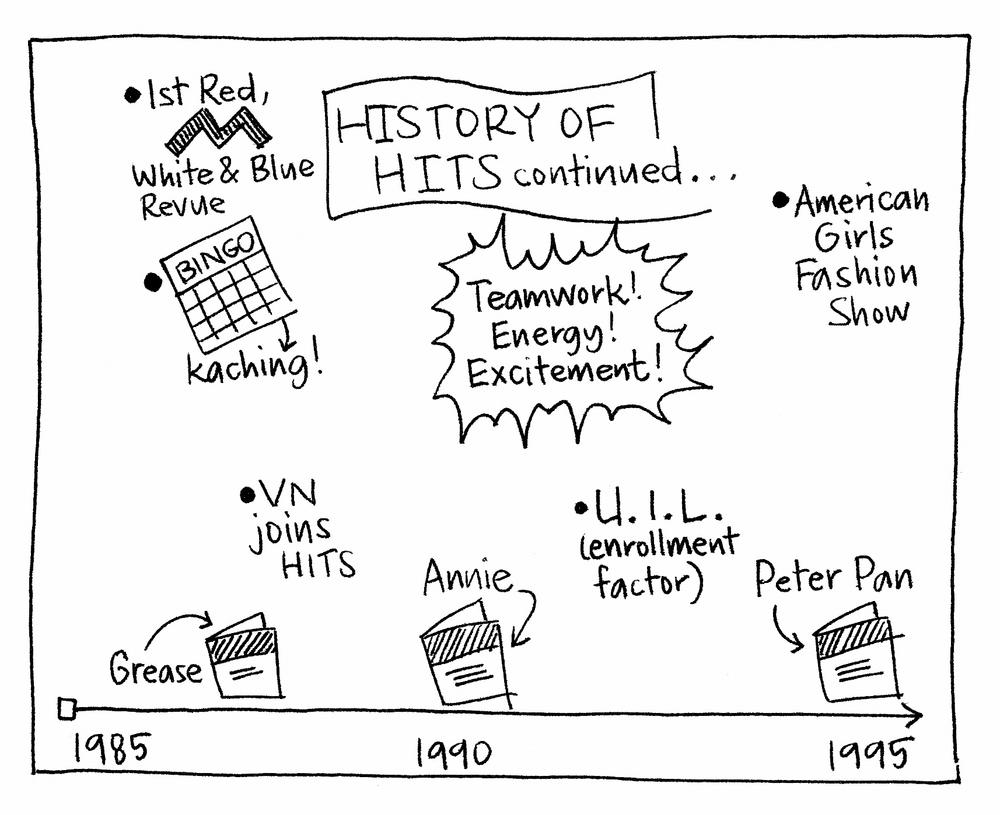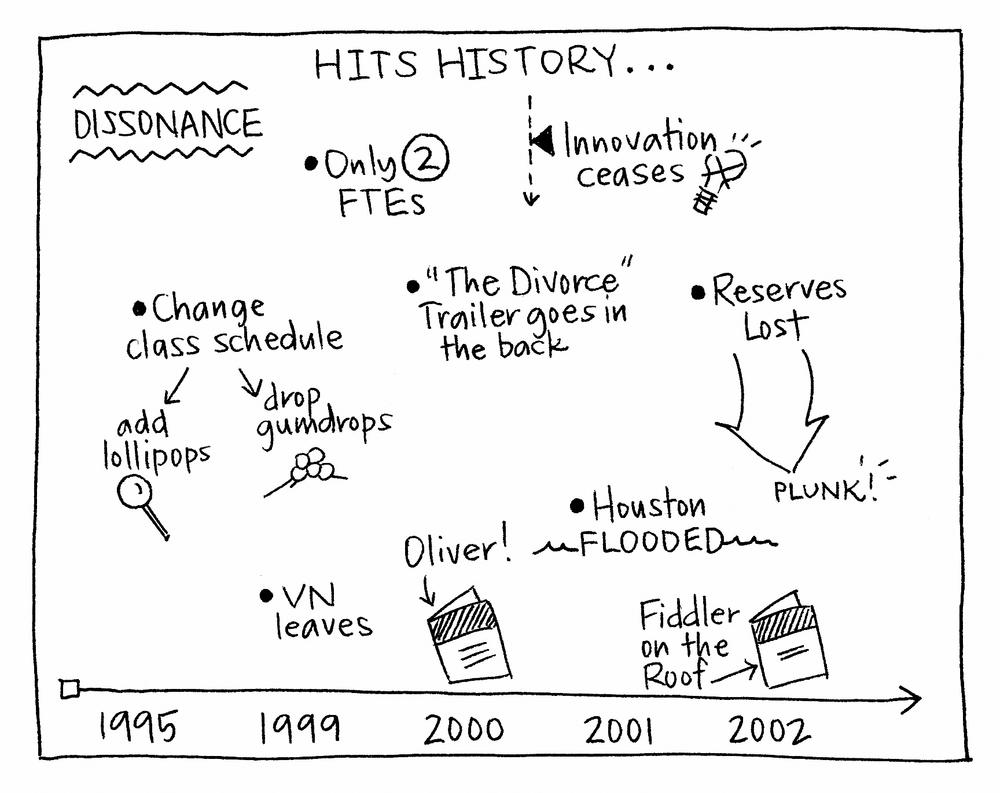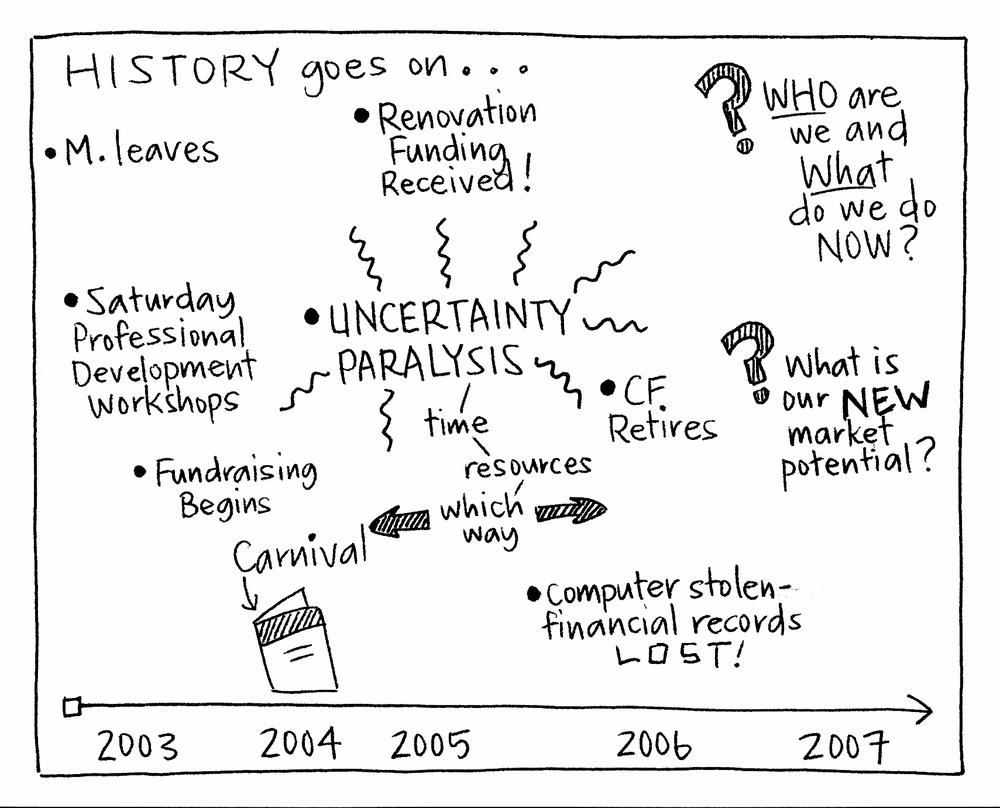Organizations naturally look ahead to anticipate progress. But the past can be as informative as the future. When an organization undergoes systemic or cultural change, documenting its history becomes an important process. By collecting and visualizing the components of history, we necessarily discover, recognize, and appreciate what got us where we are today. We can see the past as a guiding light or a course correction for our future. The History Map game shows you how to map moments and metrics that shaped your organization. It's also a great way to familiarize new people with an organization's history and culture during periods of rapid growth
Using flip-chart paper and markers, draw a continuous timeline along the bottom of several pages. Hang the paper end to end along a wall. Write the years under the timeline and include an appropriate starting point—don't go back 75 years if you don't need to. Choose a longer time increment, 5- or 10-year windows, if your organization has a long history, and be sure to leave enough space in between years for writing, drawing, and posting content. Leave extra space for years that you know people have more knowledge of or that were years of significant growth or change in the organization.
Ask each player to write his name and draw a self-portrait on a sticky note and post it on the wall above the year he joined the organization. As the participants approach the wall for post-ups, ask questions and encourage storytelling about first impressions of the company or why they joined. Note when you see "old-timers" approaching the wall. The richness of their experience can educate the group, so be sure to request that they share a story. Old-timers: never map a history without them.
Note
Optional activity: Before they post the sticky notes, ask the group to stand up and form a line based on when they joined the organization. Let them discover who came on board when and let the line self-organize based on these discovery conversations. Ask for their thoughts and observations once the line is sorted.
Ask questions to the group about the following, and build the history map by plotting their answers using text and images:
Company successes
Lessons learned
Changes in leadership and vision
Culture shifts
Trends in the marketplace
Structural reorganizations
The ebb and flow of regulations
Shifts in revenue and number of employees
Major projects, etc.
If you're not comfortable drawing improvisationally, establish icons before the meeting to categorize events for easy visual recognition. (For example, you can use stars for successes, arrows for increases or decreases in revenue or employees, a toolbox for projects, etc.) As you add content, refer to items you're adding and ask open-ended questions about them to keep the conversation going.
Summarize the findings and ask the players what they learned and why they believe the history of an organization is important. Look for emergent patterns in the life of the organization and verbally relate the history to the future. Request the thoughts, feelings, and observations of the players.
(The History Map continues on the next page)
Mapping a history should be an enjoyable experience for the meeting leader and the participants. It's a time for storytelling, reflection, and appreciation of the life and experience of the organization. While you're helping the group document the history, set a supportive tone and encourage camaraderie, storytelling, and honesty—even about the hard times. And if the meeting runs relatively long, leave the history map posted so that the players can review it during a break and continue to breathe life into it. Let the story build even when you're not conducting the story session. To make the creation of the map logistically easier for you as the meeting leader, follow these tips:
Always be aware of the level of institutional memory in the meeting. If you're running a game that would work better with experienced employees, include them. If you're running a game that would work better with new eyes and fresh ideas, include newer employees. Pay attention to the knowledge and experience level of the players as it relates to your desired outcome. Brand the history map with the company's logo and write a phrase beforehand that sums up the current vision and culture.
Draw major events on the map beforehand to use as conversation starters.
Use sticky notes for events where people are unsure of the dates or metrics so that you can log more accurate information later.
The History Map game is based on The Grove Consultants International's Leader's Guide to Accompany the Graphic History Graphic Guide® ©1996–2010 The Grove.



